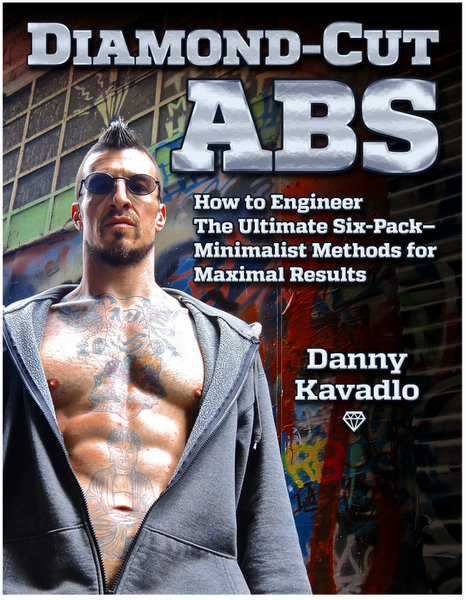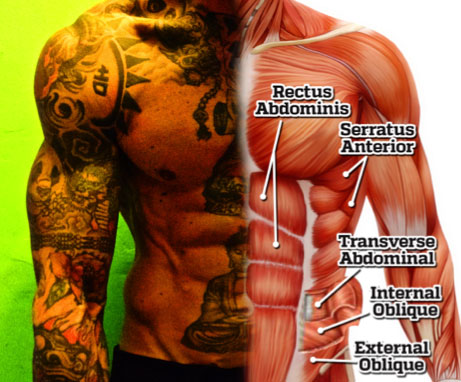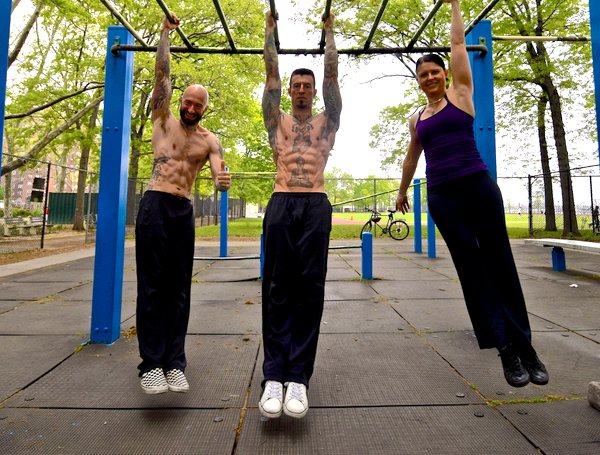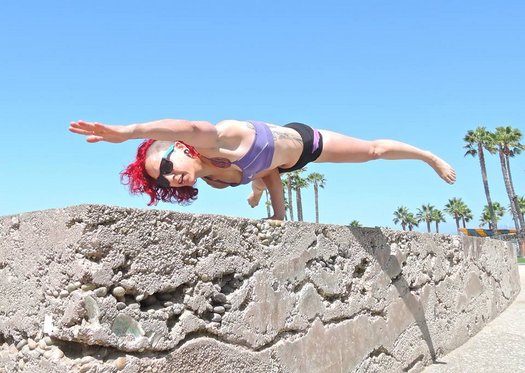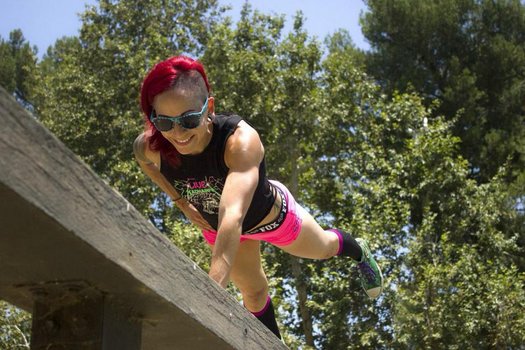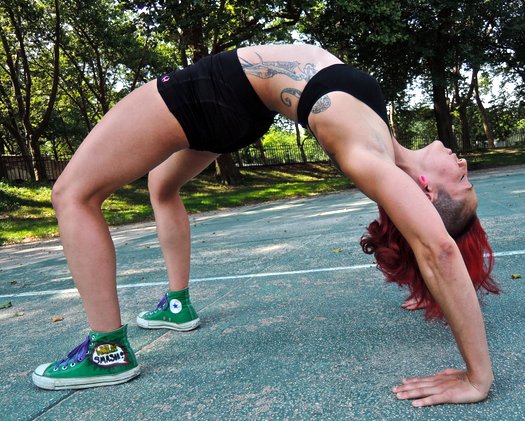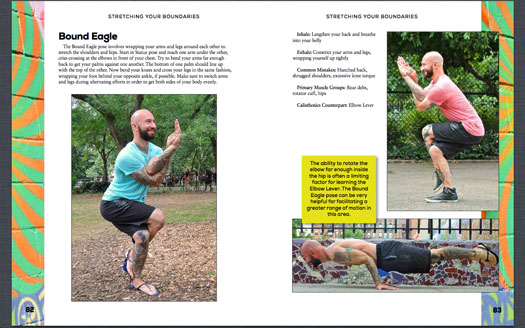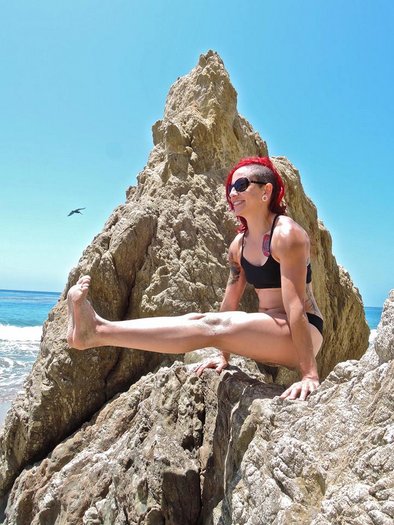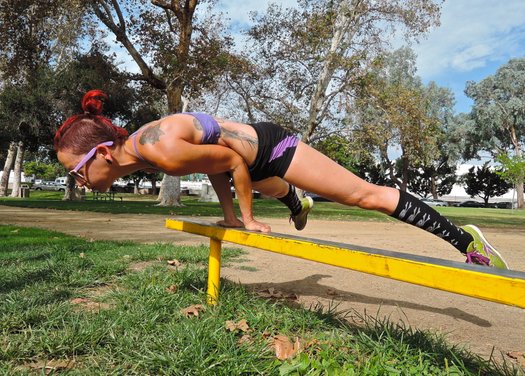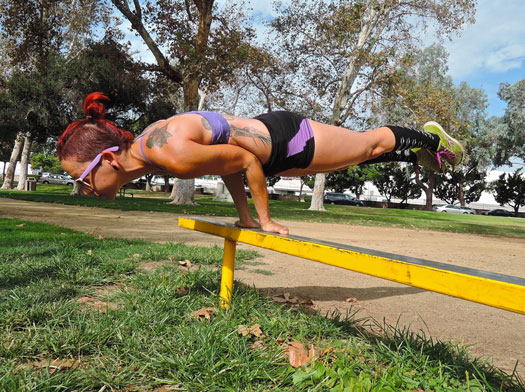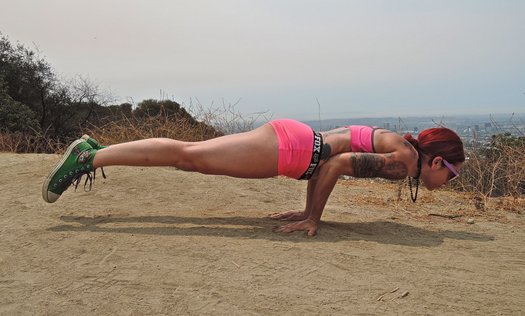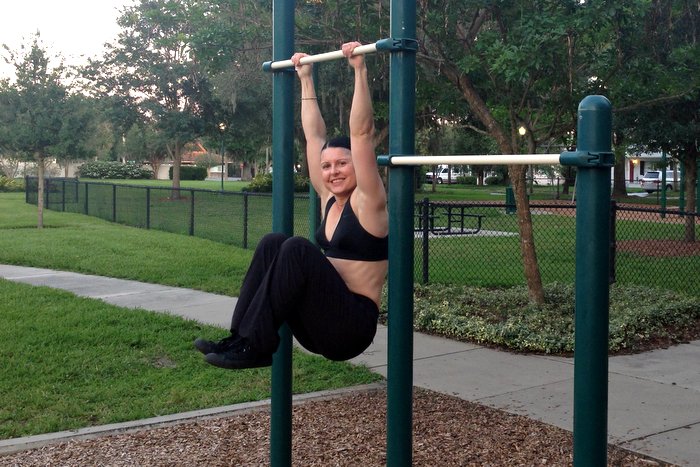
The humble but powerful knee and leg raise progressions featured in the PCC Workshop and Convict Conditioning don’t always get as much attention as some of the more visually intense exercises. Even though these moves might not be tailor-made for showing off online, don’t underestimate their importance. These progressions are the sort of “strong silent type” movements which build the muscles and coordination necessary to attempt many more advanced moves. In the context of the Century Test, the 20 knee raises also (along with the bodyweight squats) have the same requirements in the men’s and women’s tests. These 20 knee raises have sometimes been or directly led up to the make-or-break moment in a Century Test.
Testing aside, the hanging knee raise and leg raise progressions are not only great for working on your midsection, they’re a great reason to spend more time hanging on the bar and strengthening your grip. In the video at the end of this blog post, you’ll see just one of the many possible grip variations you can use when practicing hanging knee raises. Almost by accident I started doing a challenging fingertip variation—just because the available overhead support happened to be an I-beam. It was a fun challenge that really raised the difficulty of a few sets of 25 knee raises in my workout that day. Hanging knee and leg raises are also a great way to determine what you need to work on most. What “gives out” first? Your abs? Grip? Shoulder engagement? Start in on a max or near-max set of hanging knee or leg raises and you’ll soon find out!
In a crowded gym with people fighting over the more “traditional” or ab-specific items, all you’ll need to do is find a good overhead bar and you’re set. Out in the “the wild”—on a municipal fit trail (like the one in my video) or even a playground, you can easily get in some ab work, without having to lay on the ground that might be muddy. The powerful knee and leg raise drills leading up to the hanging bar work in Convict Conditioning are extremely valuable, can be practiced anywhere at all, and start at a level where literally anyone can begin and benefit. If you’re still “on the ground” with your knee and leg raise progressions, you can always still work on your strength and strategy with timed hangs on the bar.
To meet PCC standards, you shouldn’t be swinging around with your hanging knee raises. A quick but not-so-easy way to make sure you don’t swing is to really control your grip on that bar. RKC kettlebell enthusiasts will recognize the idea of trying to “bend” or “break” the bar (or in their case the kettlebell handle). In the video below I break some sticks to give you the idea. Thinking of bending the bar in this way will stabilize your upper body and give you a solid foundation for hanging knee raises, hanging leg raises and any number of twisting variations that would otherwise have you looking like an out of control set of human wind chimes. Keeping yourself in control on the bar is a great habit to start developing and to have in your personal toolkit.
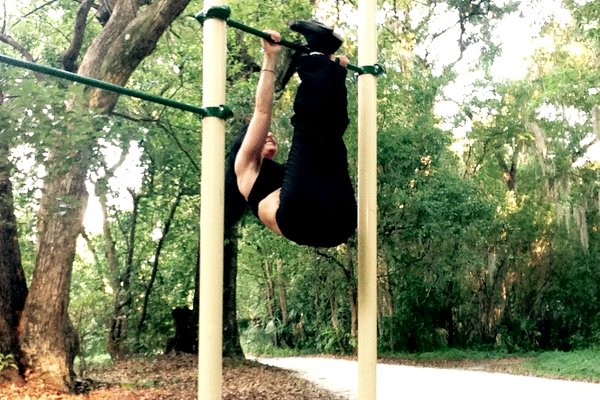
You can use the hanging knee and leg raises to a work on your grip, and to strengthen your other moves. Really, any time spent working on the bar will have positive effects on your training, strength, and physique. While many of us don’t publically talk about this last item—our physical appearance—let’s get honest about it for a minute. It’s simply human nature for us to want to look our best (at least to our own definitions). While the real benefits of these hanging knee and leg raise progressions are increased usable strength, a great side effect is some muscular development in the midsection. Provided your nutrition is in line, this can result in the coveted six pack, or the “flat tummy” touted in women’s fitness marketing. While I personally think performance and strength are better long-term motivators, having those positive visual side effects certainly doesn’t hurt! I will say that most people seem to have better long term training commitment if outward appearances are not their ONLY motivator.
Having a strong, trained midsection really sets you up for success (and safety, since a strong abdomen protects your back) with all kinds of lifting and other fun activities. I could even go so far as to say that having a strong midsection can generally improve your quality of life. (You can do everything from lift everyday heavy objects without injury to holding your own while trying a new activity like stand-up paddleboarding.)
Once you’re comfortable doing a few hanging pike raises (the PCC term for a leg raise taken up to shins to the bar) and have a reasonable grasp on pull ups, you can also try a fun and useful move called the “rollover”. While some people like to kip into this move, if you have the requisite strength, you don’t have to! Perform about ½ of a pull up, then pull your straight legs up and slightly past the bar, you’ll easily roll right over and be on top of the bar. This is a great way to practice bar dips or negative muscle-ups without burning yourself out trying to get on top of the bar. It’s also a lot of fun and looks cool! Towards the end of the video below, I demonstrate the rollover somewhat slowly so you can see what’s happening. While I had the necessary strength to do this move for a very long time, figuring out the timing of it was the crucial key.
This video is a medley of hanging knee and leg raise tips, variations, and training ideas I’ve put together just for you:
How are you using the hanging leg raise chain in your training?
***
Adrienne Harvey, Senior PCC Instructor, RKC-II, CK-FMS, originally RKC Certified in 2010, and RKC Level 2 certified in 2011, kettlebell and bodyweight training have been crucial in Adrienne’s personal quest for fitness. A core member of the PCC team, Adrienne loves sharing her knowledge with small groups and individuals. She also loves to develop recipes and workout programs to further support performance, body composition, and of course—FUN. Go to http://www.giryagirl.com for more information about Adrienne!
